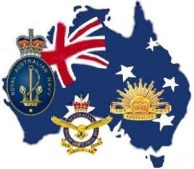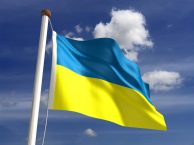
The Role of Australian Tunnel Rats in Vietnam
ED: From my inbox – Thanks Neil
The Australian Tunnel Rats were members of Engineer Field Troops serving in Vietnam. This included 3 Field Troop and 1, 2, and 3 Troops of 1 Field Squadron, Royal Australian Engineers. While a few soldiers were ‘lucky enough’ to encounter extensive enemy tunnel systems, every member of the Field Troops took turns in the underground tunnels to search, clear, and destroy enemy bunkers. Many of these bunkers were interconnected by small tunnels. In large operations, it was common for the sappers to destroy over 100 enemy bunkers.
3 Field Troop was the first Australian engineer unit deployed to Vietnam in support of the 1st Battalion, Royal Australian Regiment. In January 1965, they participated in Operation Crimp in the Ho Bo Woods, part of the notorious ‘Iron Triangle’. Their initial task was expected to involve road clearing, de-mining, and destroying enemy facilities or caches located by infantry. However, the discovery of tunnel entrances quickly changed their role.
One particular entrance became infamous when an enemy soldier used it to kill two Australian soldiers and wound two others. Despite lacking training for tunnel exploration and the obvious dangers, volunteers from 3 Field Troop entered the 60cm wide and 75cm high tunnels armed with only a flashlight, bayonet, and immense courage. Though the tunnels had been evacuated, they uncovered valuable intelligence, marking the beginning of their unexpected role as Tunnel Rats. Surprisingly, despite extensive tunnel experience from the French War and US Army explorations, no operational techniques or lessons were passed on to the Australian Field Engineers, leaving them untrained and unprepared for this dangerous task.
 (Piture: Pte Keith Mills 3 Field Troop) On the fourth day of the operation, tragedy struck when Corporal Bob Bowtell, a 184cm tall non-commissioned officer, attempted to enter a tunnel. His large size prevented air from circulating, causing him to suffocate. Several of his rescuers narrowly avoided the same fate. Over the course of six days, the troop suffered six asphyxiation casualties, including one death and five injuries, due to what was referred to as ‘bad air’ in the tunnels. This likely resulted from remnants of tear gas and smoke that had been pumped into the tunnels using their newly issued ‘Mighty Mite’ blower system. Without proper re-oxygenation, the tunnels became dangerous for those who entered.
(Piture: Pte Keith Mills 3 Field Troop) On the fourth day of the operation, tragedy struck when Corporal Bob Bowtell, a 184cm tall non-commissioned officer, attempted to enter a tunnel. His large size prevented air from circulating, causing him to suffocate. Several of his rescuers narrowly avoided the same fate. Over the course of six days, the troop suffered six asphyxiation casualties, including one death and five injuries, due to what was referred to as ‘bad air’ in the tunnels. This likely resulted from remnants of tear gas and smoke that had been pumped into the tunnels using their newly issued ‘Mighty Mite’ blower system. Without proper re-oxygenation, the tunnels became dangerous for those who entered.
Despite this harrowing experience, none of the sappers refused to continue entering tunnels when required. However, after six days, the troop was withdrawn and redeployed to Bien Hoa and later to Nui Dat to assist in establishing the operational base for the 1st Australian Task Force. The true extent of the tunnel system remained unexplored, even though it was later revealed that it served as the command headquarters for operations against Saigon, Bien Hoa, and the surrounding provinces.
While much of their work involved tunnel clearance, the sappers also spent significant time above ground, defusing booby traps, clearing paths through minefields, and acting as infantrymen during enemy contact. Additionally, they took on engineering tasks like repairing roads and bridges, as well as upgrading base facilities, leading to an exceptionally busy and diverse workload.
As their tour of duty came to an end, the sappers turned their focus to documenting the techniques they had developed and establishing training protocols for future troops who would follow in their footsteps, navigating the dark, confined tunnels on hands and knees.
Though clearing tunnels remained hazardous, the majority of the 35 sappers who died in Vietnam or the 200 who were wounded suffered injuries in mine-related incidents rather than tunnel operations. This equated to a 36% casualty rate among highly skilled young soldiers. Between 1965 and 1971, five Military Medals (MM) and one Military Cross (MC) were awarded. Given the high-risk nature of their work and significant casualty rates, this under-recognition is more a reflection of the limited distribution of awards than the valour and experiences of the Tunnel Rats.



